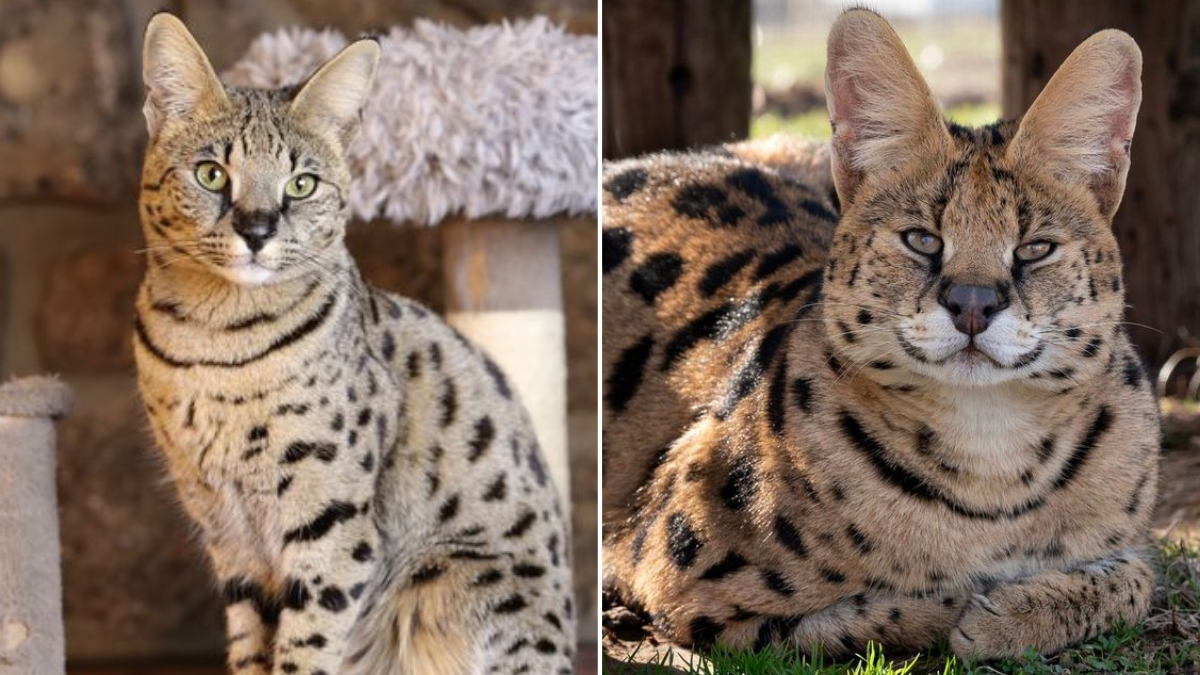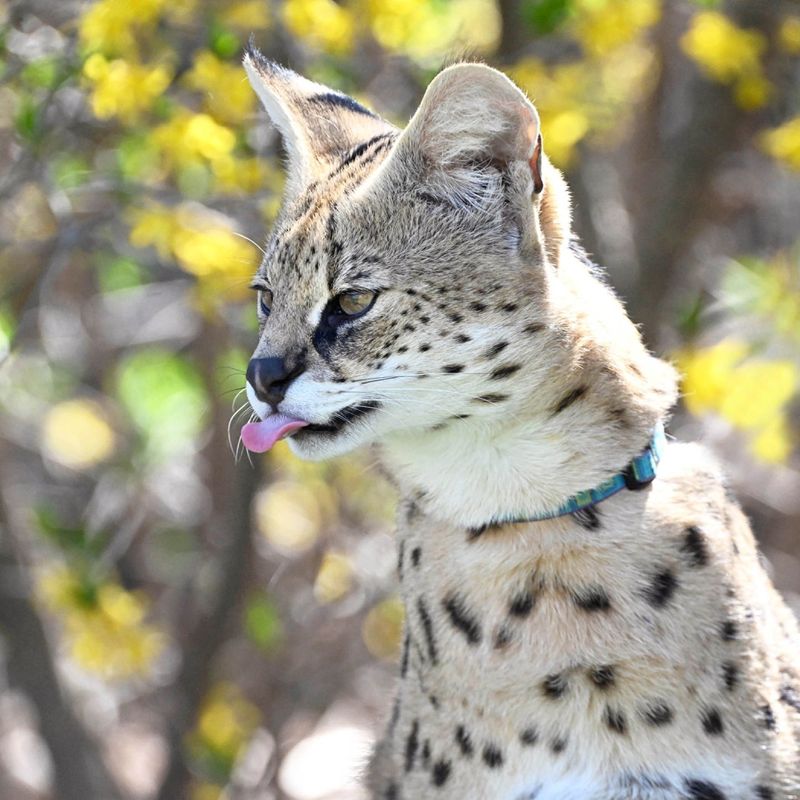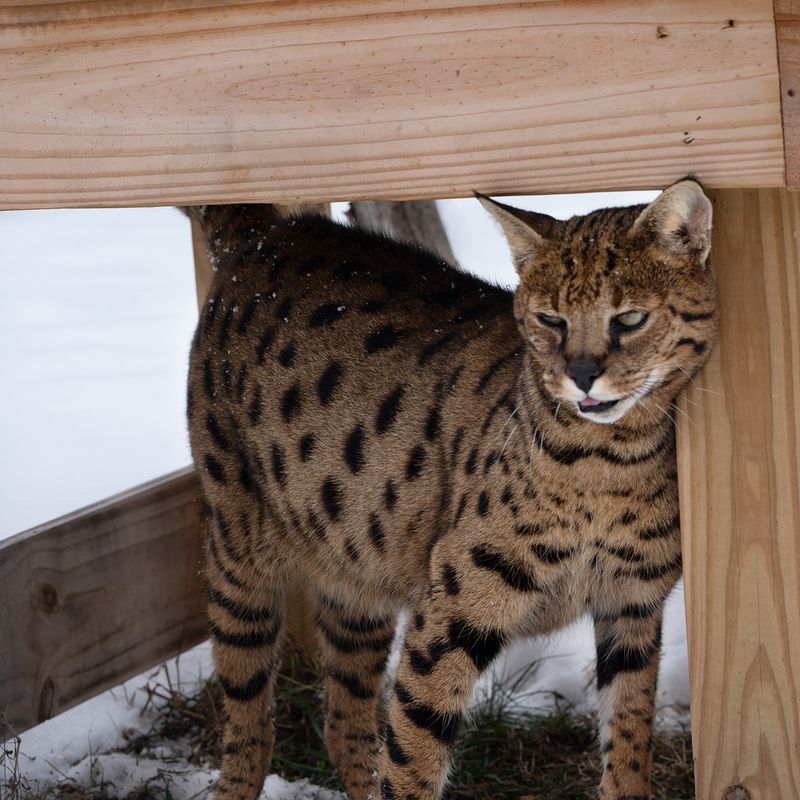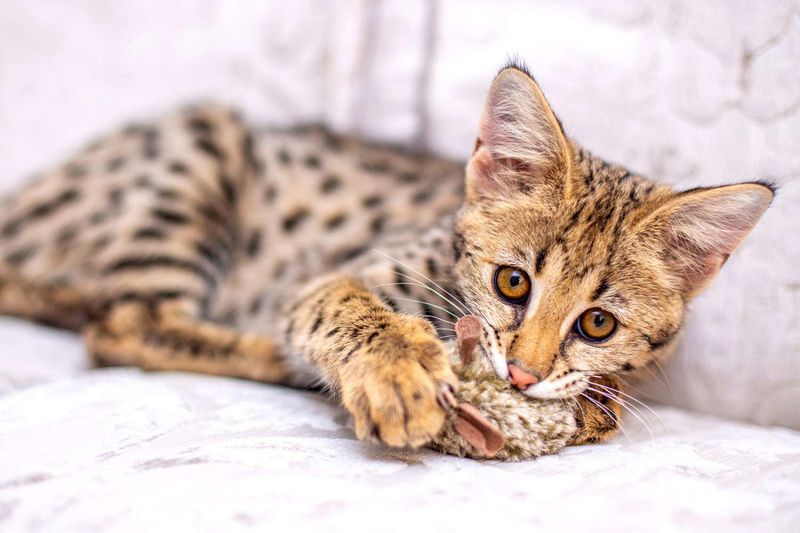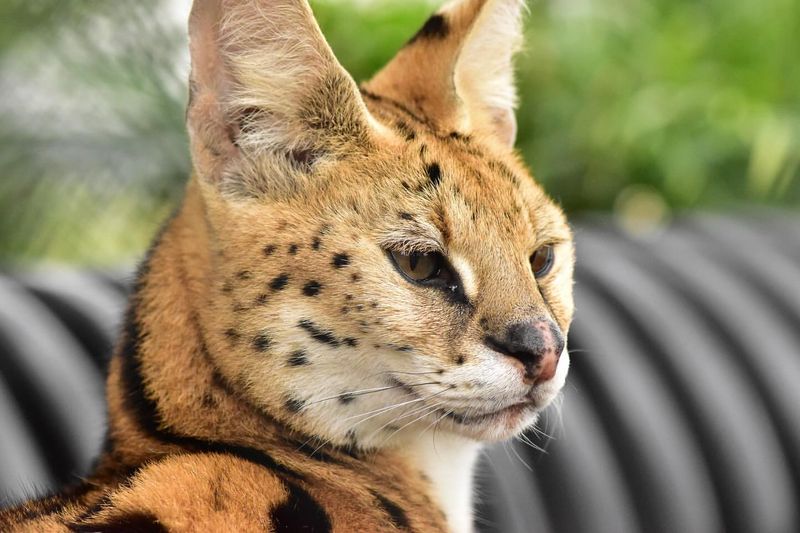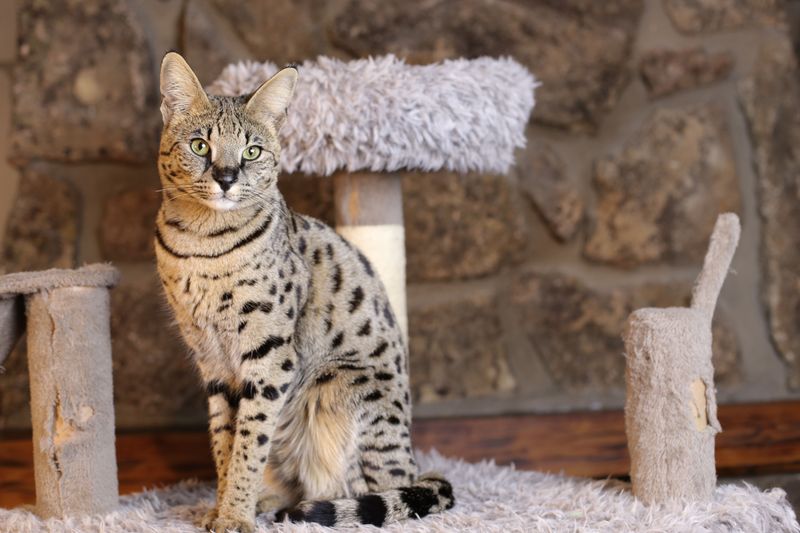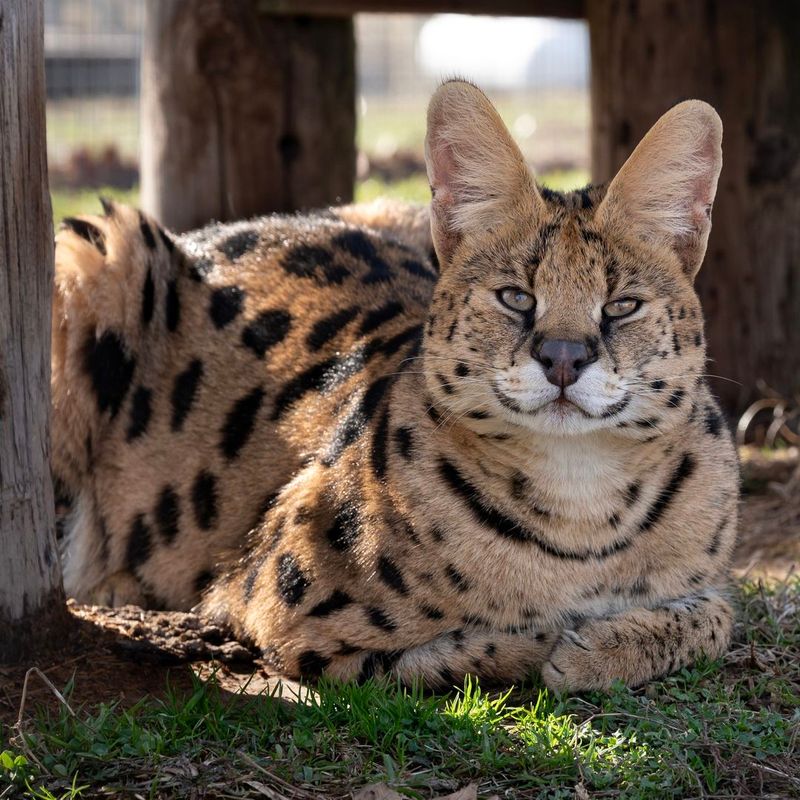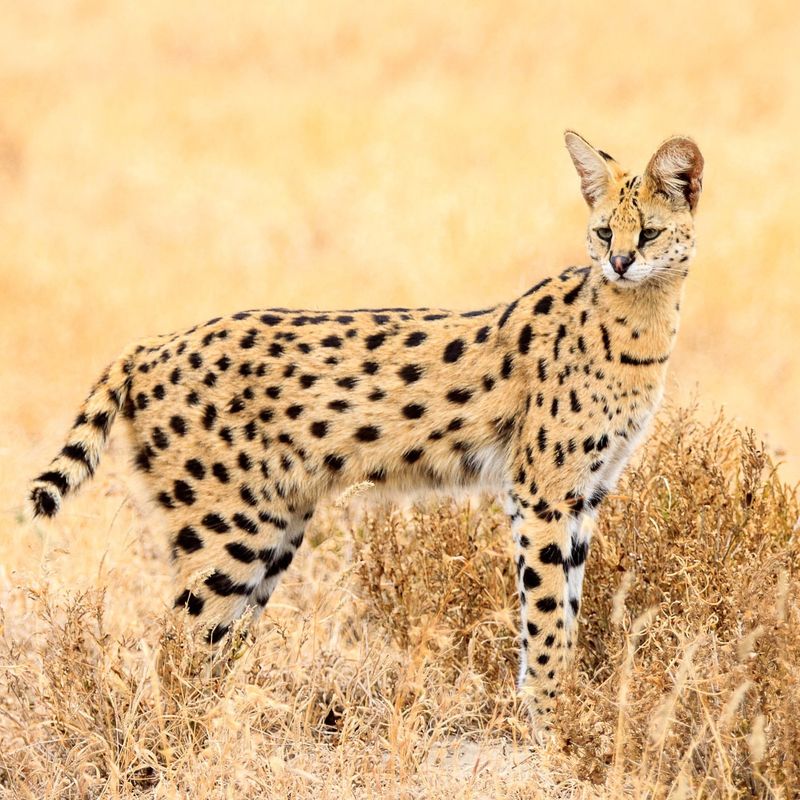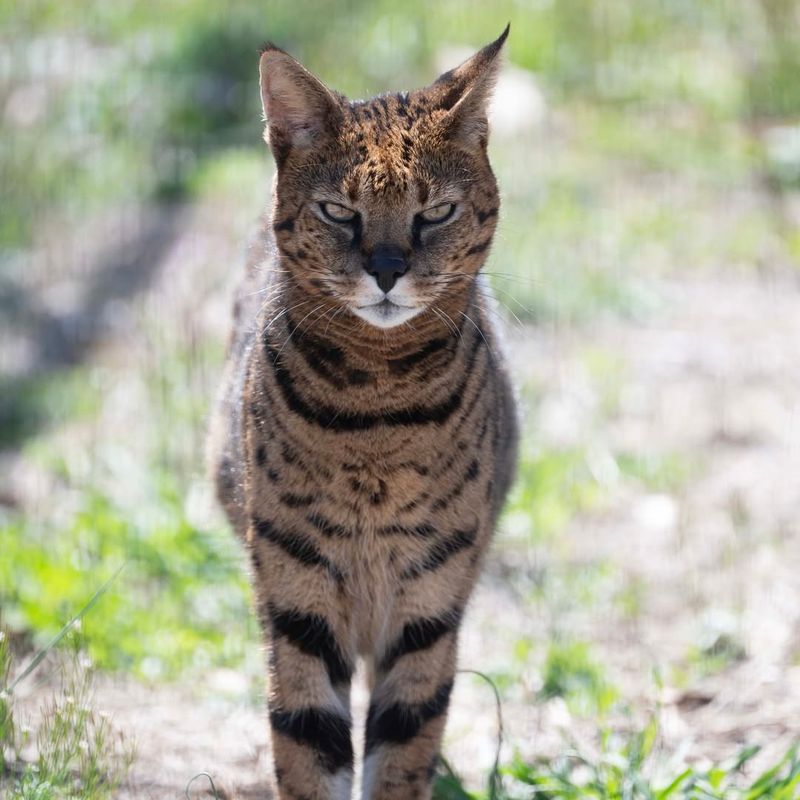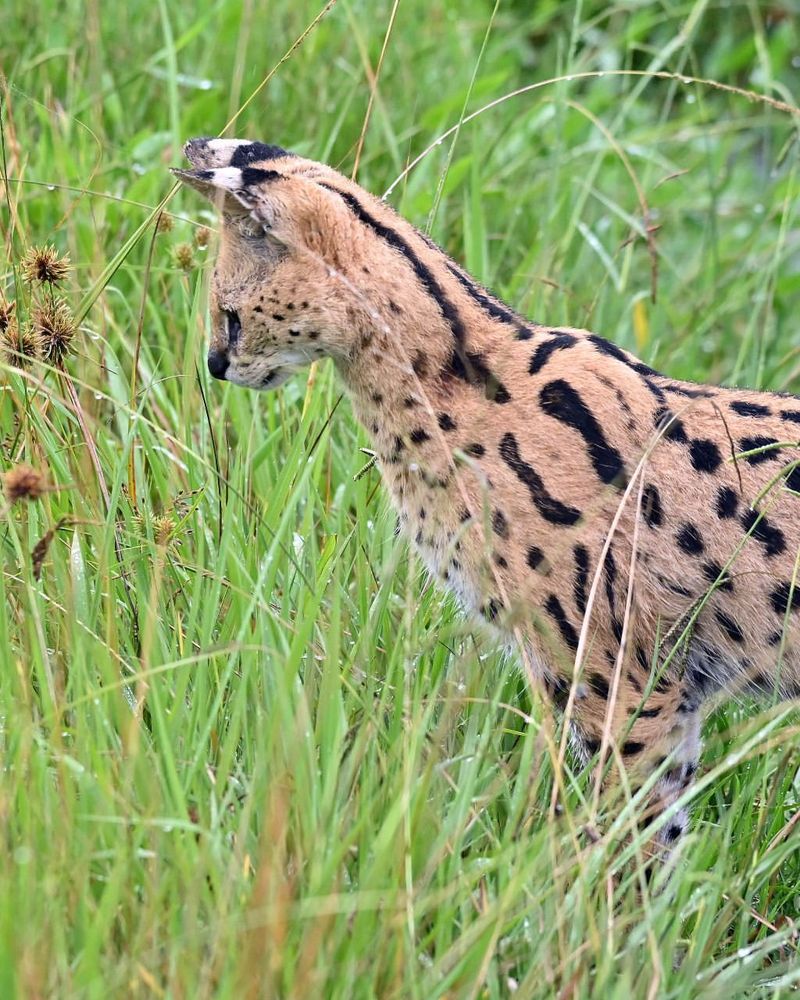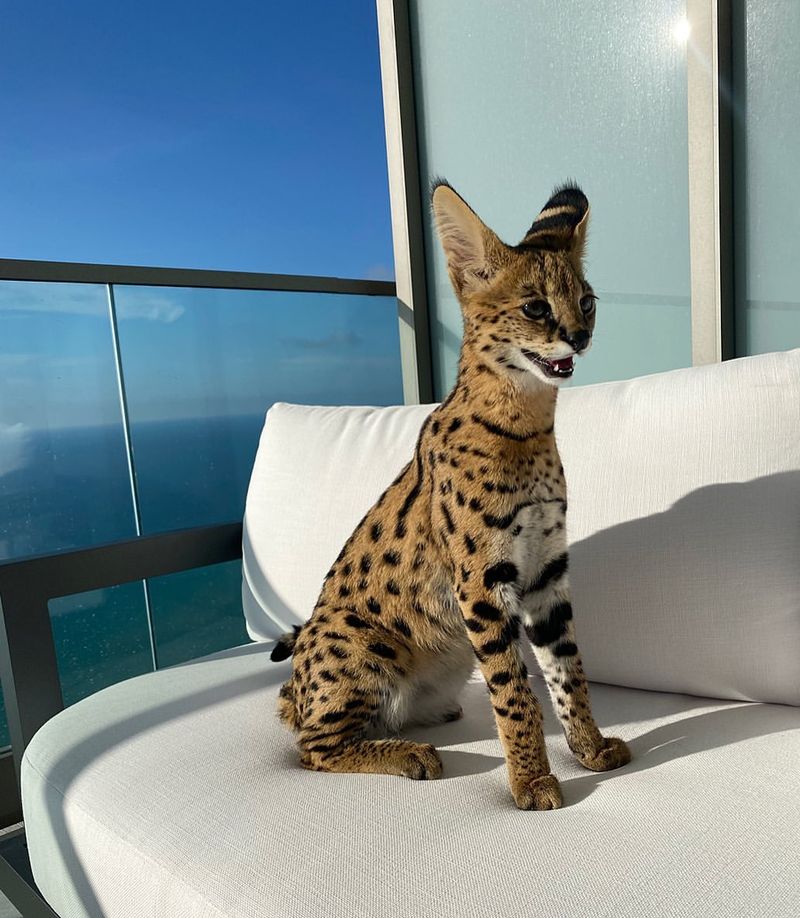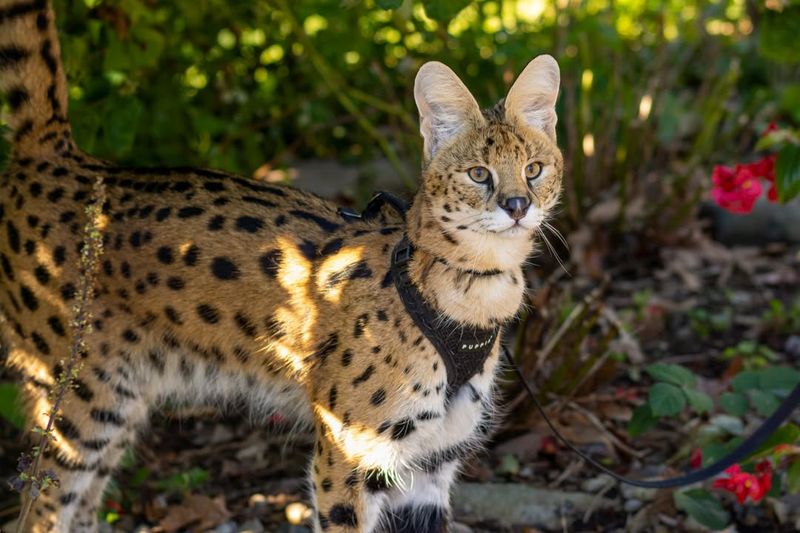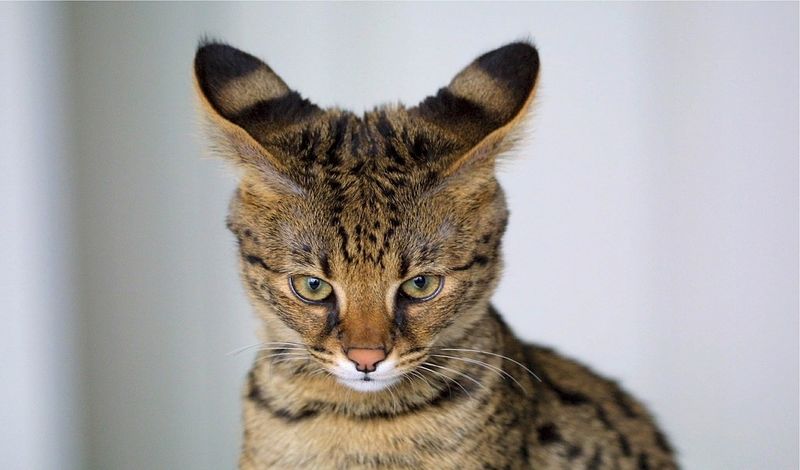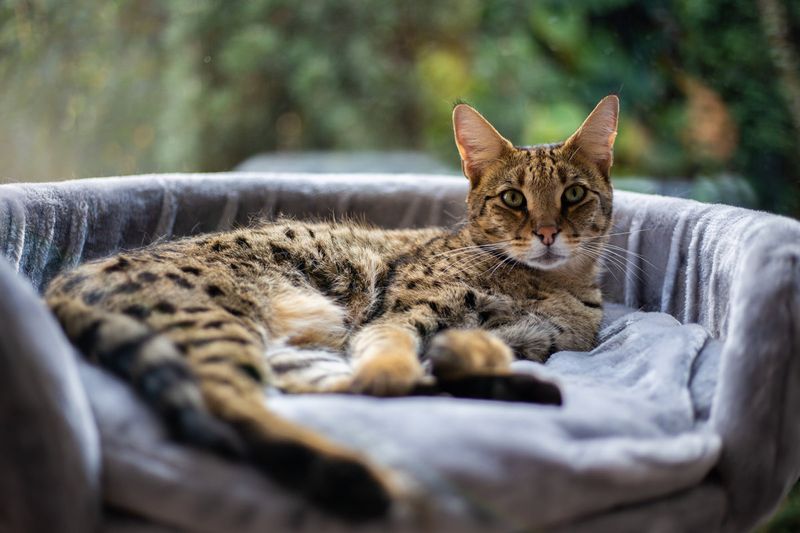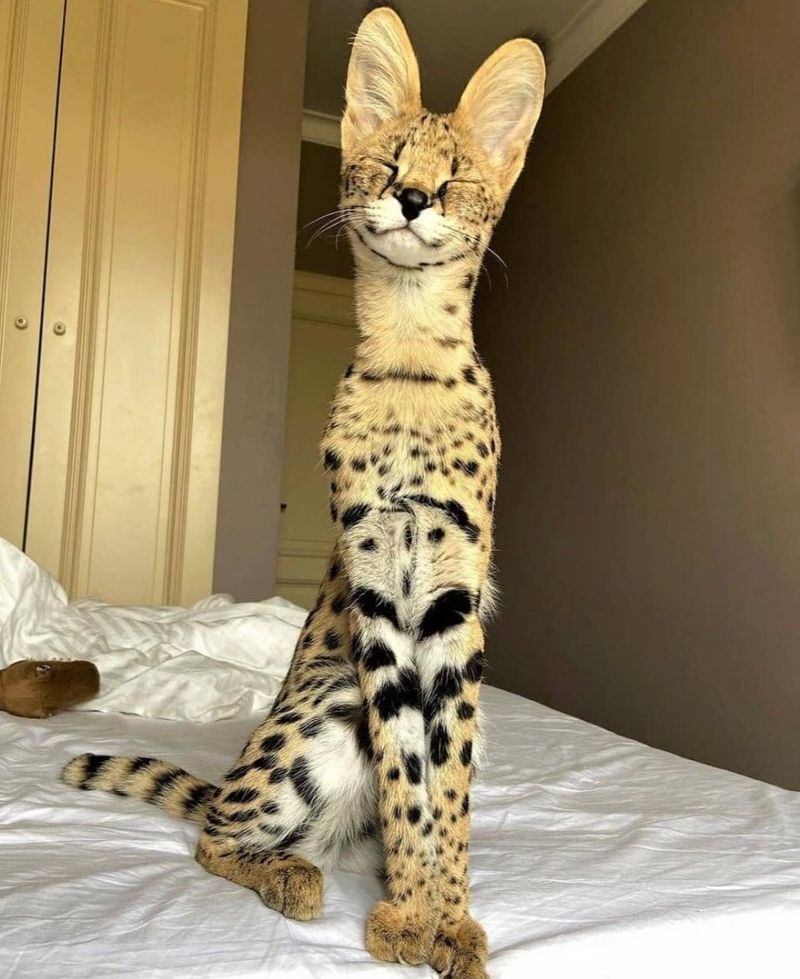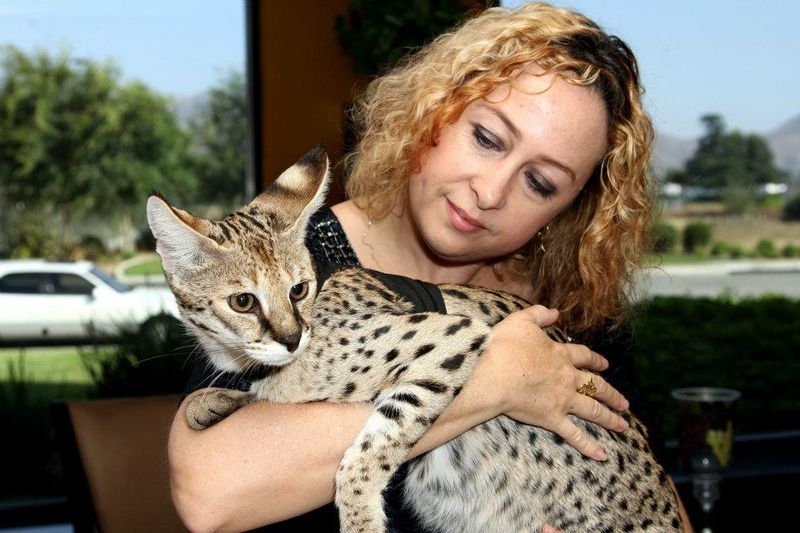📖 Table of Content:
- 1. Origin and History
- 2. Physical Appearance
- 3. Dietary Needs
- 4. Social Interaction
- 5. Adaptability
- 6. Behavioral Traits
- 7. Legal Status
- 8. Lifespan
- 9. Exercise Requirements
- 10. Vocalizations
- 11. Intelligence and Training
- 12. Breeding and Generations
- 13. Grooming Needs
- 14. Housing Requirements
- 15. Bonding and Attachment Styles
Serval and Savannah cats may appear strikingly similar, but they have distinct differences that go beyond their looks. These differences stem from their unique origins, personalities, and specific care needs. While both breeds share a wild ancestry, the variations between them are crucial to understand for anyone considering them as companions or simply wanting to learn more about these exotic felines.
The Serval, a wild African cat, has a significantly different background from the Savannah, which is a hybrid breed created by crossing a Serval with a domesticated cat. This distinction shapes not only their behavior but also their physical characteristics and care requirements. While both breeds retain a level of wildness, the Savannah cat tends to be more domesticated in comparison, though still highly energetic.
Recognizing these key differences can make all the difference when choosing a pet or studying these fascinating creatures. From their activity levels to their diet and grooming needs, each breed requires different types of care. Understanding these differences ensures a better appreciation of what it takes to keep either breed happy and healthy in a home environment.
1. Origin and History
A wild feline native to Africa, the Serval cat has roamed the savannas for centuries. With its long legs and spotted coat, it’s well adapted to the open grasslands. In contrast, the Savannah cat is a hybrid breed, originating from a cross between a Serval and a domestic cat.
First bred in the 1980s, Savannahs combine the wild with the tame. Their unique history reflects a blend of nature and nurture, resulting in a fascinating feline. Understanding their origins reveals much about their behavior and needs as pets.
2. Physical Appearance
Servals are known for their long legs, large ears, and spotted coats, resembling a cheetah’s miniaturized version. Their sleek build and striking appearance make them easily recognizable. Meanwhile, Savannah cats inherit some of these traits but with more variability in size and fur patterns.
Depending on the generation, Savannahs can have larger or smaller ears and a mixture of spots and stripes. These physical differences not only distinguish them but also affect their agility and lifestyle, whether in the wild or as pets.
3. Dietary Needs
In the wild, Servals feast on a diet of small mammals, birds, and insects, relying on their hunting prowess. Their diet is high in protein and essential for their survival. In contrast, Savannah cats, being domesticated, thrive on high-quality cat food rich in protein.
Owners must ensure a balanced diet to cater to their hybrid metabolism. While Savannahs can eat similar foods to domestic cats, occasional raw meat treats can satisfy their instincts. Proper nutrition is crucial for both, albeit achieved differently.
4. Social Interaction
As solitary animals, Servals tend to avoid interaction with other creatures except during mating. This independent nature is a clear reflection of their wild instincts. In contrast, Savannah cats are highly social and typically enjoy engaging with their human families.
They enjoy companionship and can get along with other pets if properly introduced. This sociability makes them excellent pets for those who can provide enough attention. However, owners must understand and respect their need for occasional solitude, balancing interaction with independence.
5. Adaptability
With their ability to leap and adapt to the wild savanna, Servals are perfectly suited to their natural habitat. However, these survival skills don’t always lend themselves well to living as a domestic pet. In contrast, Savannah cats inherit some of these traits but are far more comfortable in the home environment.
They adjust well to various living conditions, provided they have enough space and stimulation. Their hybrid nature allows them to thrive in domestic settings, making them versatile pets for urban and rural households alike.
6. Behavioral Traits
The solitary and nocturnal habits of Servals make them excellent night hunters, driven by powerful instincts. Their behavior is shaped by the wild, making them less inclined to seek human interaction. On the other hand, Savannah cats retain some of these instincts but are more social and tend to form close bonds with their human companions.
This social nature makes them more suitable as pets, but they still require stimulation and exercise. Their playful yet independent demeanor can be both charming and challenging, requiring a committed owner to meet their needs.
7. Legal Status
Due to their wild origins, owning a Serval as a pet is restricted or banned in many places. Laws vary greatly by region, often requiring permits or special licenses. Savannah cats face fewer restrictions as they are a domestic hybrid.
However, some areas restrict ownership based on the cat’s generation. Prospective owners must research local laws to ensure compliance and avoid legal issues. Understanding these regulations is crucial, as it affects their ability to legally keep these exotic cats.
8. Lifespan
The lifespan of Servals in the wild is typically 10 to 12 years, largely due to the risks of predators and habitat destruction. In captivity, though, they can live longer when properly cared for. Savannah cats, on the other hand, can enjoy a lifespan of 12 to 20 years thanks to the more predictable and safe nature of domestic living.
Their hybrid vigor contributes to their longevity. However, both require good healthcare and proper living conditions to thrive. Understanding their lifespan differences helps potential owners prepare for the long-term commitment of caring for these unique cats.
9. Exercise Requirements
With boundless energy, Servals thrive in wide-open spaces, needing expansive territories to hunt and explore. Their exercise needs are intense, which can make them difficult to keep in a typical household. Meanwhile, Savannah cats, while energetic too, can be kept content with interactive play and enrichment activities.
They enjoy interactive toys and regular playtime, which helps keep them fit and happy. Owners must commit to daily activities to satisfy their energy levels. Proper exercise is vital for their health, preventing obesity and boredom-related behaviors.
10. Vocalizations
Using growls, purrs, and a high-pitched chirp, Servals communicate with each other in their natural environments. These vocalizations help them with everything from attracting mates to alerting others of potential threats. Savannah cats, while more domesticated, still keep some of these sounds, such as their chirps and distinctive meows.
They are more vocal than typical domestic cats, often engaging in conversation with their owners. Understanding their vocal patterns helps owners recognize their needs and emotions, fostering better communication between cats and humans.
11. Intelligence and Training
Servals are intelligent, using problem-solving skills to hunt and navigate their environment. While their intelligence is impressive, training them poses challenges due to their wild nature. On the contrary, Savannah cats are highly trainable, responding well to clicker training and commands. Their curiosity and intelligence make them quick learners, often mastering tricks and tasks.
However, consistent training and patience are essential. Owners who engage their Savannah cats mentally will find them rewarding companions, capable of learning and adapting.
12. Breeding and Generations
Breeding in the wild, Servals maintain a pure lineage. In contrast, Savannah cats are bred through careful selection to maintain the hybrid traits of both Serval and domestic cats. Generations are denoted as F1, F2, etc., indicating the Serval’s distance.
F1 Savannahs have higher Serval traits, whereas later generations are more domesticated. Understanding these generational differences is crucial for prospective owners, as they affect behavior, size, and legal considerations. Responsible breeding practices ensure the health and well-being of these unique cats.
13. Grooming Needs
Being wild, Servals groom themselves and require little human intervention. Their short coats are low maintenance. Savannah cats, despite their wild heritage, benefit from regular grooming to reduce shedding and matting. Brushing them weekly helps maintain their coat and strengthens the bond with their owner.
While their grooming needs are minimal, attention to their ears and nails is essential. Understanding these grooming requirements ensures a healthy, happy pet. Owners who establish a grooming routine enjoy a cleaner home and a content cat.
14. Housing Requirements
To thrive, Servals require spacious enclosures that resemble the wild savannas, offering room for them to roam and indulge in instinctual behaviors. Their enclosures must be well-secured to prevent any escape, given their strong sense of independence. Savannah cats, on the other hand, are content with indoor living, where they can enjoy climbing structures and plenty of enrichment activities to keep them entertained.
While they don’t need as much space as Servals, a stimulating environment is crucial. Prospective owners must assess their ability to provide suitable housing, balancing safety and enrichment for these fascinating felines.
15. Bonding and Attachment Styles
Servals retain their wild instincts throughout their lives, creating a fundamental difference in how they bond with humans. These African wildcats typically maintain an independent nature, keeping emotional distance even when raised from kittenhood. Their attachment style remains cautious and reserved.
Savannah cats, being domesticated hybrids, develop much stronger emotional connections with their human families. They follow their owners around, seek physical affection, and often display dog-like loyalty uncommon in most feline breeds. This difference stems directly from the Savannah’s domestic cat genetics. For potential owners, this attachment distinction matters tremendously. While Servals may tolerate human presence, Savannahs actively seek it out, creating the meaningful companionship most pet owners desire.
